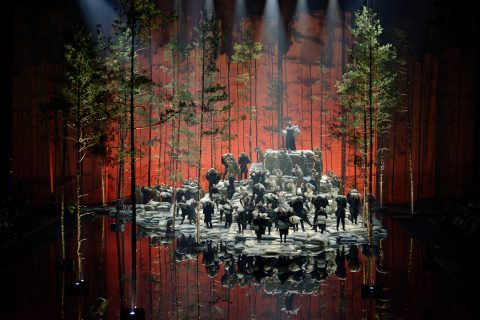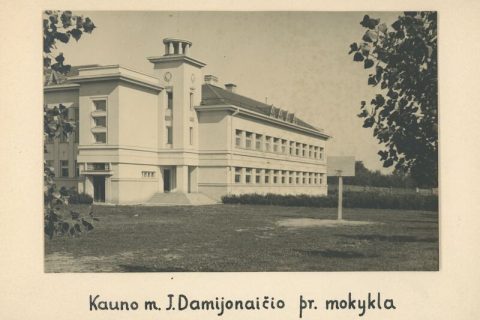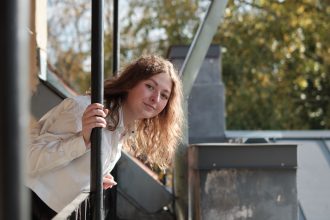What sounds do you think of when you hear the word “Brazil”? Perhaps many people associate it with samba melodies and wildlife choirs from the depths of the rainforest. But this time the question is about another Brazil and another Argentina, not those that are across the Atlantic but the ones that mark the edge of Žaliakalnis, where you can see Šilainiai from, and its angular silhouette would not really go well with samba.
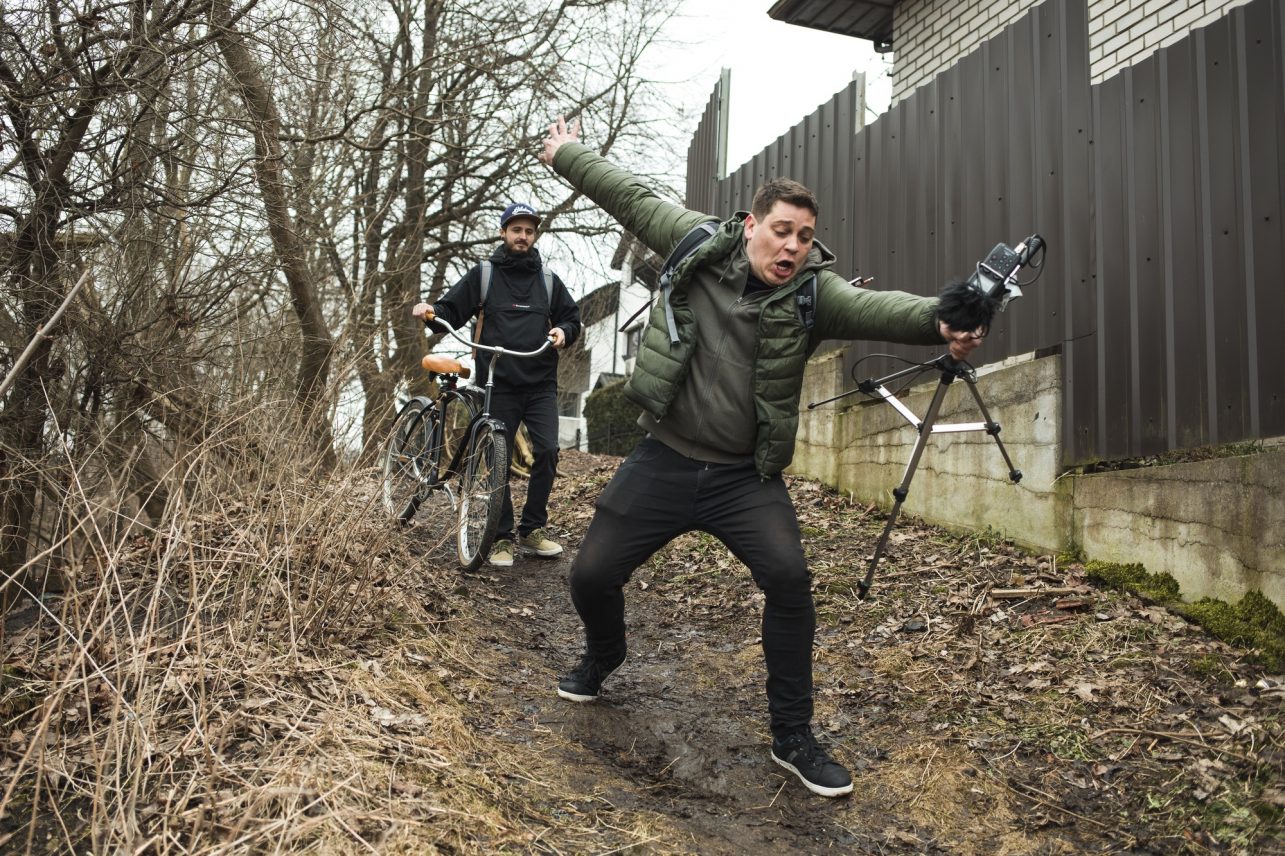
We have already written about Brazilka and Argentinka in one of our first issues. The quarters of the poorest Kaunas residents emerged in the 1920s on the eastern slopes of the Neris valley and became the Lithuanian interpretations of the favelas of the distant Latin lands. Hints of them or even complete fragments can still be found today. These are isolated houses, much smaller ones than the Kaunas standard. The plots are curved and strangely shaped along with a spontaneously arranged network of chaotic streets. We talked to the person who had a mission to record the sound of these north-western hills of Žaliakalnis and, if necessary, to perform a peculiar soundtrack of these exotically named places in Kaunas. That person is sound artist Martynas Timinskas, who is creating The Stories of the Northern Slope in the context of the Kaunas 2022 program Modernism for the Future, MoFu 360/365 project.
We met Martynas at the spot where Brazilka began – a triangular square, which was recently given the name of Antanas Samuolis. The artist says that the future result of the project will consist of three parts: visual, audio, and an installation representing them. “One of the parts of our project – musical visual installation – will appear here. Cretu Alexandru Constantin is taking care of the UV light-sensitive decorations in A. Samuolis Square, and my job is to illuminate it, create music and provide sound to it.”

“I am very happy with this project. We’ve only just started working, but more and more people keep joining us. My colleague Arūnas Periokas and photographer Justinas Stonkus are helping with advice, time, and inventory. As luck would have it, Justinas Stonkus, who is currently researching the wooden architecture of Kaunas, will be photographing people, buildings, and finds for future visualizations,” Martynas says.
We are heading towards the slope that descends to Nuokalnės Street, in the name of which, most of the Kaunas’ Brazil was once demolished. Today the street is responsible for a lot of background noise felt at the once quiet part of the city. Martynas’ arsenal includes microphones, a harmonica, and other toys that emit or make sound, including a teaspoon. All of this is meant for hearing the district and making it speak. We are listening to the story about the audible part of the project, “The sounds that make up a musical piece should be threefold. First goes the general background: animal or bird noises, their juxtaposition with large traffic flows surrounding the area and heard at any time of the day. Secondly, the objects in the district will be used as instruments [the interviewee points at the metal fence] for composing a piece. And, of course, additional elements will be used, say a child’s singing.”
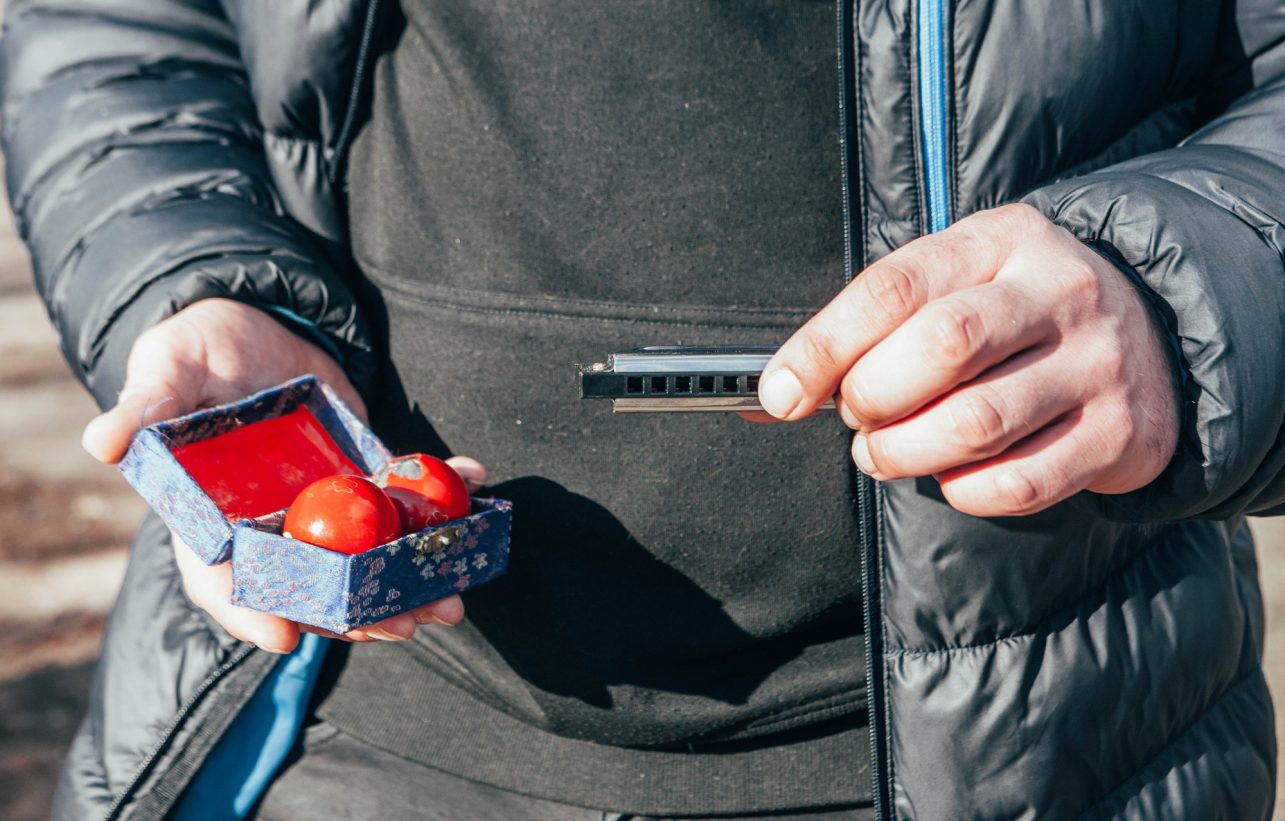
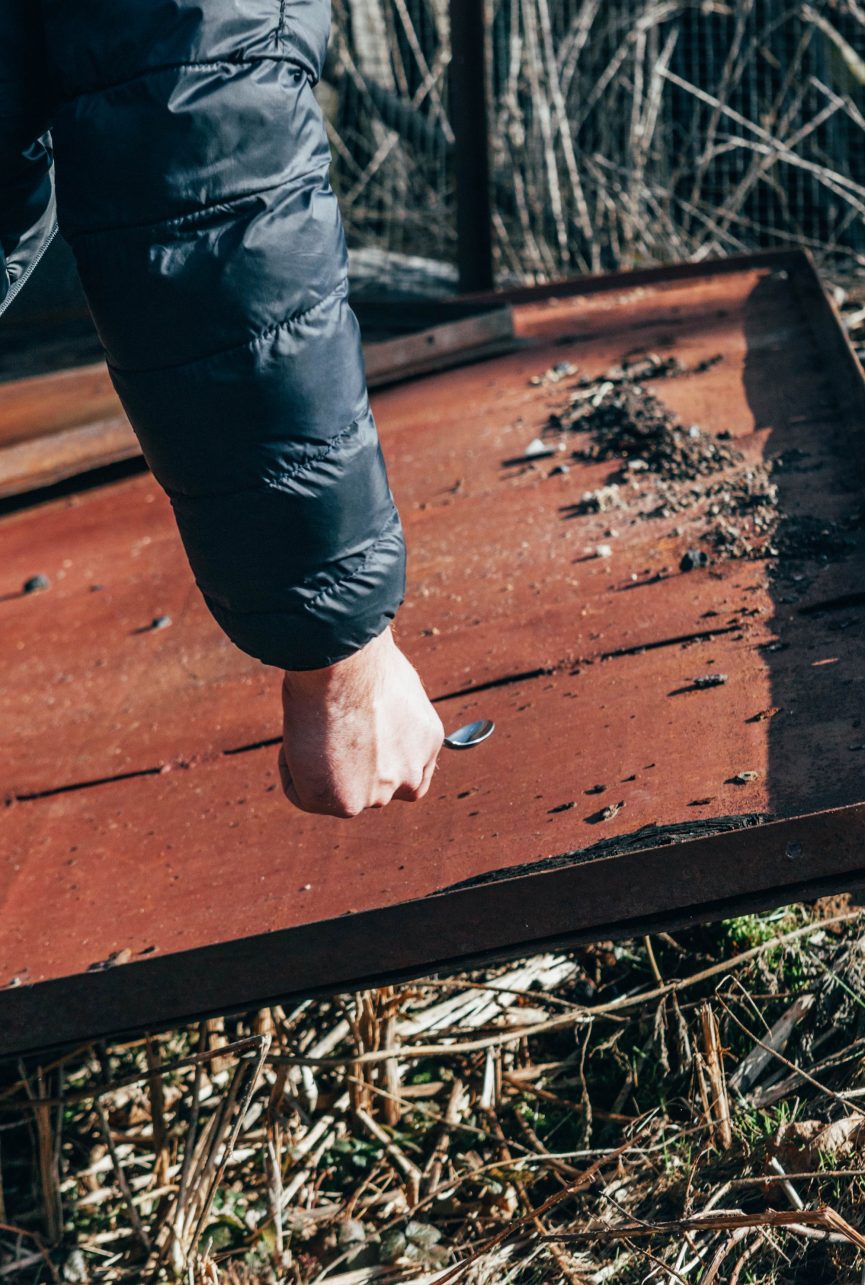

Martynas will not be able to record everything that existed in the district a few years ago. The city is changing rapidly, and some archaic elements disappear. One of such things is the communal hydrant located at the end of P. Dovydaičio Street, which was used by the last people, who lived here without running water at home. “The locals said that the hydrant would freeze, and they would try to make it work by banging it violently with a hammer and you could hear the sound in the whole district,” the interviewee laughed. “Maybe that’s why no one really cared when Arūnas and I were banging on every metal object with a hammer at the children’s playground on the last day of winter.” The artist promises to pay attention to these important highlights of the district in his work, albeit the sources that will provide sound will have to be found elsewhere.
We are looking for another sound-related highlight of the district – a trip of goats that lived somewhere between Brazilka and Argentinka a few years ago. On the hilly Anykščių Street, Martynas points to the place overgrown with bushes and trees, “Here, where the VW Golf is parked, is my favourite house. Every time I pass through here, especially if the day is sunny, I see many different birds gathered here and they look like they are having a serious discussion.” On Puntuko Street, we stop at another fence, which becomes an improvised xylophone. Dogs are barking in the background, but that doesn’t bother us. “Let’s try to make the fence speak. We are only testing today. There are singers in the background, but they are also part of the district,” Martynas smiles. We head down the slope, where we will soon climb back up to Argentinka. The panorama of Šilainiai opens up from the site of a former high-voltage pole, and on this side of the river, you can see composer Juozas Gruodis’ house surrounded by leafless trees. It is intended to record both of the objects, “On a windless day, it might be interesting to record the sound of the traffic from that site. We also plan on visiting Gruodis.”
We don’t find any goats. Yet another phenomenon, the audio representation of which will have to be found elsewhere. We climb back up the hill, this time via narrow paths of Argentinka. For Martynas, this is the first project of this kind, when the creative process requires him to leave the studio. “I play bass in the band It Was Us, I also have a live electronic music project, Somma Happiens. And outdoor recordings are a new and really interesting thing for me. You learn many things, not in terms of creative work but also psychologically, for example, how to approach people, not only for a conversation but to bang on a post box and record it.” The visual accompaniment of the future work, which the interlocutor will create both from the old paintings and from the images captured by the photographer, is also a partly new challenge for him. “I have created visuals for rock and electronic music shows but this is an entirely different thing. It is no longer an illustration for an illustration’s sake that simply looks good. It must reflect what lies in the music and in that part of the city, so that the connection between them would tell everything and there would be no need of adding a verbal narrative, where music would simply remain as a background.”
We return to the square where we started the walk. “Arūnas was standing with the recorder at the intersection, and I had left mine a bit further. I banged at all those pipes like crazy,” the artist points to the playground. “When you put together the material from remote installations, you hear how that sound travels. That’s an interesting effect.” According to Martynas, it is too early to answer the question of how many of the natural recordings versus manipulations, we will be able to hear in the compilation, “In this whole musique concrète phenomenon it is important to decide how much you will allow yourself to manipulate the sound. For example, whether you slow the tape down or speed it up. For the time being, the question remains as to how much of that sound will be a hundred per cent true and how much will I want to add the results that come from playing with the sound.” Before saying goodbye, we pass by a few relatively new houses. The city is changing, but some parts of it will remain captured forever, not only visually but also as sounds.

